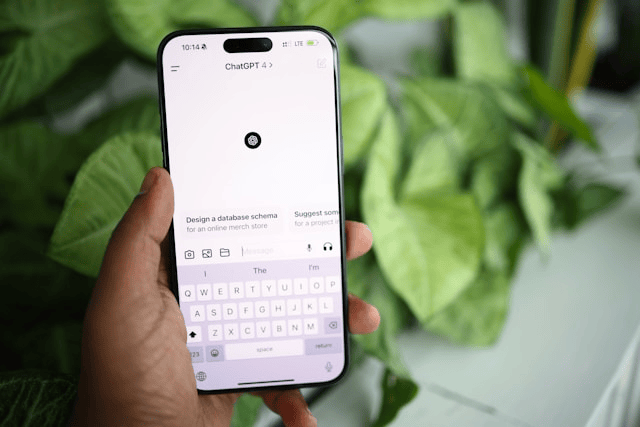The workplace is undergoing a profound transformation, and at the center of this shift is generative AI—especially tools like ChatGPT. What began as a novelty has rapidly become an indispensable part of the digital toolkit for professionals across industries. From automating routine tasks to reimagining creativity and collaboration, ChatGPT is not just enhancing how we work it’s redefining it.
The Rise of Generative AI in the Workplace
The adoption of generative AI in the workplace has accelerated at a pace few anticipated. ChatGPT, developed by OpenAI, exemplifies how artificial intelligence can be integrated seamlessly into everyday workflows. Unlike earlier productivity tools, ChatGPT doesn’t just assist—it co-creates. It drafts emails, writes code, summarizes meetings, and even acts as a brainstorming partner.
Businesses are recognizing that using ChatGPT at work isn’t just about speed; it’s about unlocking new ways of thinking, solving problems, and communicating. Whether you’re a marketing manager or a software developer, the integration of AI productivity tools into daily routines is becoming the norm.
Boosting Productivity with AI
One of the most immediate impacts of ChatGPT has been the significant boost in workplace productivity. Here’s how:
-
Task Automation: From generating reports to writing job descriptions, ChatGPT reduces time spent on repetitive tasks. This lets professionals focus on higher-level strategic thinking.
-
Writing Assistance: Professionals use ChatGPT for email drafting, editing proposals, and even preparing presentation content. It helps overcome writer’s block and speeds up content generation.
-
Real-Time Summaries and Insights: Employees can paste meeting transcripts, long documents, or customer feedback into ChatGPT to get instant summaries, insights, or action points—saving hours of manual review.
The use of AI for business isn’t just limited to output efficiency. It’s fundamentally shifting how work is initiated, managed, and delivered.
Shaping New Team Dynamics
As generative AI becomes embedded in daily operations, team roles and dynamics are evolving. Instead of relying solely on hierarchical communication, teams are using AI tools like ChatGPT to bridge knowledge gaps and enable asynchronous collaboration.
For example:
-
Project managers use ChatGPT to draft timelines and progress updates.
-
HR professionals use it to create onboarding materials and training modules.
-
Designers and developers use it to communicate ideas across technical and non-technical team members more clearly.
Rather than replacing human roles, ChatGPT is augmenting them. The shift requires teams to develop AI literacy—understanding how to prompt, interpret, and critically assess AI-generated content.
Real-World Use Cases Across Industries
The impact of ChatGPT extends across multiple sectors. Here’s a closer look at how different industries are leveraging ChatGPT at work:
Marketing and Content Creation
Marketing teams use ChatGPT for campaign ideation, blog writing, SEO planning, and social media copy. It enables faster content turnaround while maintaining a brand voice when prompts are well-structured.
Customer Support and Service
Customer service teams are deploying AI chatbots powered by ChatGPT to handle FAQs, reduce wait times, and provide 24/7 support. Human agents then handle more complex queries, ensuring efficiency and satisfaction.
Software Development
Developers use ChatGPT for code generation, bug fixes, and understanding unfamiliar frameworks. It acts as a coding assistant, especially for junior developers navigating new systems.
Education and Training
Educators and L&D professionals use ChatGPT to develop lesson plans, quizzes, and personalized learning content. It also helps employees upskill quickly by generating easy-to-understand explanations of complex topics.
The growing number of these use cases proves that AI for business is not a trend—it’s a foundational shift.
Challenges and Ethical Considerations
As with any powerful tool, the widespread use of ChatGPT raises important questions:
-
Bias and Accuracy: While ChatGPT often provides helpful outputs, it can also reflect biases present in its training data. Businesses must vet and fact-check its suggestions.
-
Overreliance on AI: There’s a risk of losing creativity or critical thinking if professionals lean too heavily on AI-generated content.
-
Data Security: When using generative AI in the workplace, confidentiality is paramount. Organizations need clear policies on how and when to use AI tools securely.
Despite these challenges, the benefits outweigh the concerns for most businesses—especially when usage is guided by robust internal protocols and ethical frameworks.
The Future of Work with ChatGPT
The future of work will be defined not just by technology but by how we choose to work alongside it. ChatGPT is setting the stage for more human-centric productivity—where routine tasks are handled by AI, and professionals can focus on creativity, innovation, and empathy.
In the coming years, we can expect:
-
Greater integration of ChatGPT with workplace apps like Slack, Notion, and Microsoft Office.
-
Evolving roles that combine domain expertise with AI fluency.
-
AI co-pilots that help manage projects, teams, and even strategic decisions.
Ultimately, the successful organizations will be those that view generative AI not as a replacement for human work, but as a powerful collaborator.
Final Thoughts
ChatGPT is more than just a tool it’s a paradigm shift. It’s changing how we communicate, make decisions, and create value in the workplace. As AI continues to evolve, so must our approach to work.

